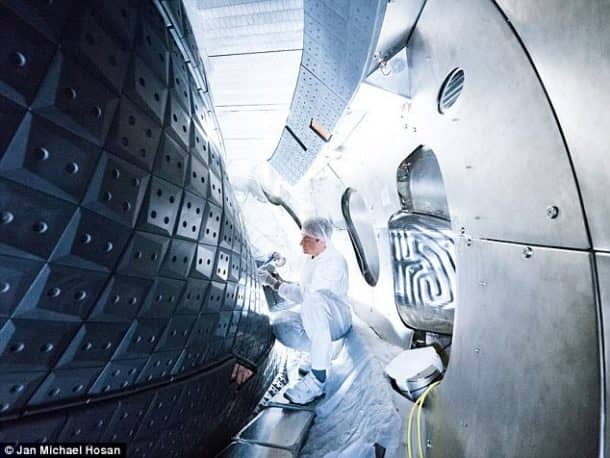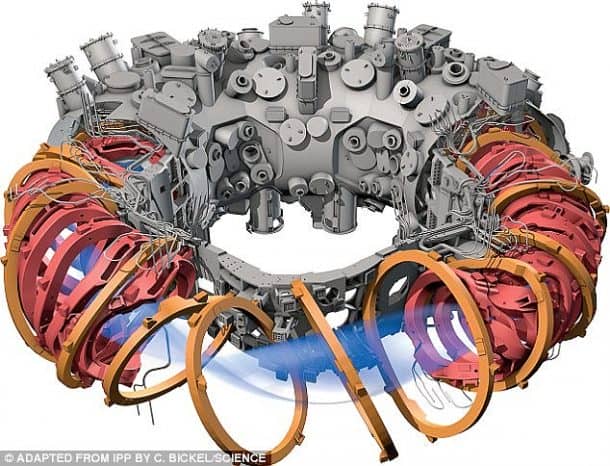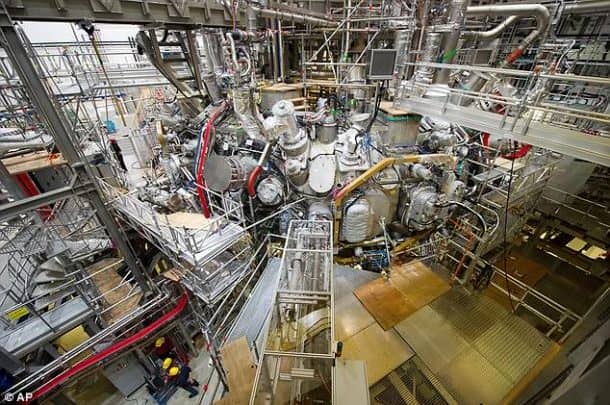Wendelstein 7-X stellarator is located in Greifswald, Germany. The researchers involved in the project call it the largest stellarator fusion device on Earth. The researchers from the Max-Planck Institute for Plasma Physics and the Wigner Research Centre for Physics released the following video back in October titled “Wendelstein 7-X plasma video.”
The reactor was first switched on two years ago for the very first time and a research paper was published last December which showed that everything was working as it should be in the initial tests. There was a 15 months conversion break and the experiments resumed in September this year.
The recent upgrade was to allow the reactor to withstand higher heat and longer pulses. Measuring instruments were also installed which allowed the scientists to measure the turbulence in the plasma. “We shall be able for the first time to check whether the promising predictions of theory for a completely optimized stellarator are correct,” said project head Thomas Klinger in September. “In comparison with previous devices, Wendelstein 7-X is expected to yield quite new, possibly even better, conditions.”

The experiment aims to harness energy from nuclear fusion, the process taking place in our Sun. Experts believe that we are still some time away from achieving nuclear fusion but once achieved, it could replace fossil fuels and even nuclear fission reactors.
There are two contenders for nuclear fusion reactors, and these are tokamaks and stellarators. ITER is one of the largest tokamak reactors in France and they claim to be halfway to completion. The tokamaks control plasma with just a 2F magnetic field whereas stellarators work by generating twisted 3D magnetic fields.

The device was initially fired up in December 2015 using helium as it is easier to heat than hydrogen and the results of those tests are being used to verify the feasibility of stellarators in future fusion reactors. The researchers released another video just a couple of days ago and trying to figure out if the reactor is producing the right magnetic fields or not.
The magnetic field is the most crucial part as it is the only thing that will trap the hot balls of plasma long enough for nuclear fusion to occur. Physicist Sam Lazerson of the US Department of Energy teamed with the German scientists to test the Wendelstein 7-X fusion energy device. According to a report published in Nature Communications, the reactor is working as planned. “We’ve confirmed that the magnetic cage that we’ve built works as designed,” said Sam Lazerson.
“Here we show the first physics results, obtained before plasma operation: that the carefully tailored topology of nested magnetic surfaces needed for good confinement is realized, and that the measured deviations are smaller than one part in 100,000,” said the authors of the report. “To our knowledge, this is an unprecedented accuracy, both in terms of the as-built engineering of a fusion device, as well as in the measurement of magnetic topology. “This is a significant step forward in stellarator research since it shows that the complicated and delicate magnetic topology can be created and verified with the required accuracy.”
We will see in the coming years how the stellarator progresses and if it holds the key to all future nuclear fusion reactors.



